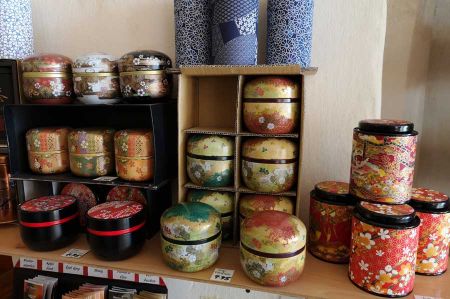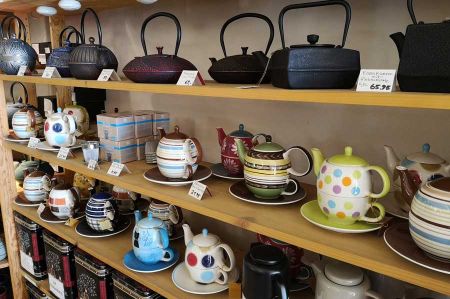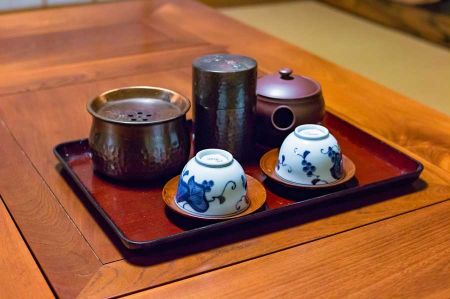Tea - preparation rituals as different as the dishes
- Written by Portal Editor
In almost all cultures on earth, tea is prepared in special, one could say typical containers, whether in jugs, in pots, in larger ceramic or wooden vessels, which often have culture-typical shapes and are in many places part of the arts and crafts.
The tea is then drunken from smaller drinking vessels such as bowls, cups and mugs.
In China, tea is infused in pots made of porcelain or unglazed clay, for example in clay pots from Yixing, or in lidded bowls (Gaiwan). In Japan, porcelain and clay jugs with side handles, called kyūsu, are common. In both countries, tea is traditionally drunk from bowls (chawan). Powdered green tea (Matcha) is brewed in larger bowls specially made for this purpose and drunken from these. In English preparation, a teapot and teacups are usually used, which belong to a service, but cup and mug brewing without a pot is also common, which is dominant in gastronomy, among other things. In the military, camping or on expeditions, tea is often prepared using lighter metal or plastic dishes.
Changes in taste and cloudiness due to cooling


After East Frisia fell to Prussia, King Frederick the Great founded the Emden East Asian Trading Company in Emden, which imported a large number of porcelain vessels and tea of considerable commercial value in the short period of its existence. Even today you can find some original Chinese porcelain from this time. The vessels from the Far East were adapted to the European taste as the volume of trade increased.
Manufacturing porcelain brings change
In East Friesland, dishes from the Wallendorf porcelain factory were particularly popular. This so-called Dresmer Teegood (Dresden tea set) was available in two typical decors: a blue painting (Blau Dresmer) and the well-known red rose (Rood Dresmer). Other designs were known, but were not as popular.
Partly in East Friesland itself, partly outside of it, but especially for East Friesland, teaspoons were later designed and tea scoops, cream spoons and sugar tongs were produced with which the Kluntje (candy candy) is put into the cup, as they are still common today. There were also the occasional teapots and tea and sugar bowls made of silver.
The mentioned decorations of the tea set, applied to thin-walled, ribbed porcelain cups and associated teapots, tea caddies, etc. as well as the above-mentioned spoons are still available today, although the manufacturers changed variously over the years. Unlike in the past, today's teacups have handles and are served on a saucer (Schöttelke), and the tea is poured through a sieve that holds back the tea leaves.
Please read as well:
The real walnut - imposing giant trees in Eigeltingen
Tea - more then a non-alcoholic national drink
